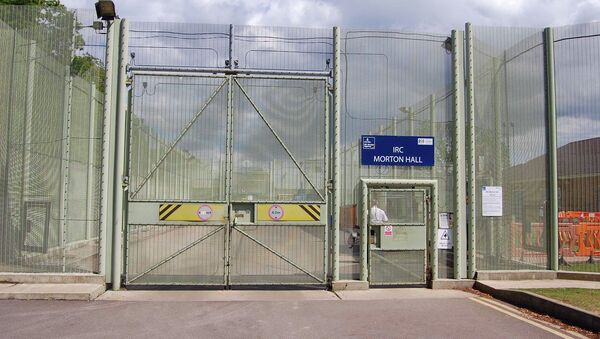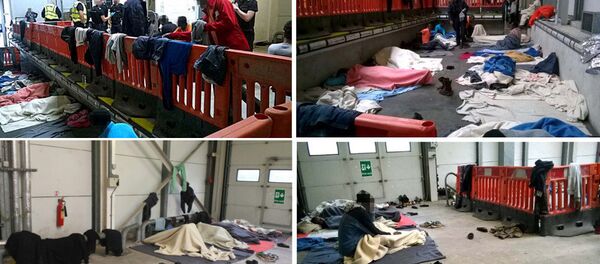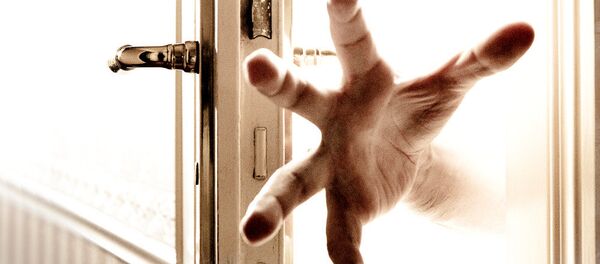It's suggested that the scale of immigration detention in the UK has "increased without any strategic plan, or statement of purpose," according to Ali McGinley for charity, Detention Forum.
Here's what Ali McGinley, of @AVIDdetention, said about the #ImmigrationBill.
— TheDetentionForum (@DetentionForum) May 13, 2016
Read more at https://t.co/p7CTnZiIa7 pic.twitter.com/57jl2A4e6c
In a recent review of detention centers by Stephen Shaw, a former prison and probation ombudsman, he said: "the use of detention is determined on a direct one to one basis by the number of available spaces. A strategic decision therefore needs to be made about the size and location of the IRC estate over the next decade and longer."
Responding to the review in an article for Detention Forum, McGinley suggests the additional 60 places to Brook House and 40 places to Tinsley House "sits uncomfortably within this [reduction of detention places] and runs counter to the [Home Office] reform agenda.
"It is also another worrying example of the trend towards larger detention facilities," citing Verne and Harmondsworth Immigration Removal Centers (IRCs).
Verne, a former military citadel built of stone during 1857-81, is now home to asylum seekers who have had their claim rejected and are awaiting deportation. The IRC is surrounded by a moat with access only by footbridge or tunnel. The recent prison watchdog report said that the former Victorian fort remained "too prison-like in character" with too much fencing and razor wire.
Appalling treatment of people on suicide watch in #detention at the #Verne IRC documented in HMIP inspection report: https://t.co/pLU01Fo7A6
— TheDetentionForum (@DetentionForum) August 25, 2015
Harmondsworth near Heathrow airport is the second largest detention center in Europe and holds only men.
#Harmondsworth is also Europe’s largest immigration #detention centre.What a sad record! #Unlocked15 pic.twitter.com/GXQzqBmsx9
— TheDetentionForum (@DetentionForum) October 29, 2015
However despite submitting an agenda for reform centered on reducing detention numbers in the UK, the Home Office has "quietly expanded bed spaces at Brook House and Tinsley House," McGinley states.
Human rights organization, Right To Remain has documented countless experiences of detainees at centers around the UK. For its "Unlocking Detention" 2014 and 2016 series, the charity collected blog posts from people who had been detained in Brook House. In an account offered by a detainee called Yann, he described it as a "prison."
"Brook House runs like a prison. They open the cell at 8am and then close it at 11:30 am. They open it again at 12om for lunch. Shut again at 4:30om. Open again at 5pm for dinner and then close at 8:30 pm till the following morning," Yann writes.
"There is a window in your cell but you can't open it. Over the period I was at Brook House I had a huge drop in my Vitamin D because there was no access to light.
"I got no fresh air. I felt suffocated."
Brook House is to be extended by 60 places.
#Detention expansion by stealth at hidden sites of injustice: read experts-by-experience on Brook and Tinsley House https://t.co/SJ1VELWw6l
— Right to Remain (@Right_to_Remain) August 19, 2016
Initial plans to reduce the number of people detained in England and Wales were expected to be outlined in the Immigration Enforcement's Business Plan for 2016/17. However, this plan remains unpublished.
It's therefore unsurprising that charities committed to the well-being of immigrants in detention centers view the latest expansion of beds as a stealth move by Britain's Home Office.
The UK is the only country in Europe to allow the indefinite detention of migrants.
Recent Home Office figures reveal that 30,000 migrants are detained indefinitely — some having never committed a crime.





